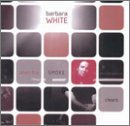| All Artists: Barbara White, New York New Music Ensemble, Princeton Composers Ensemble, Talujon Percussion Quartet Title: Barbara White: When the Smoke Clears, for clarinet, violin & marimba; Third Rule of Thumb, for percussion quartet; No-man's land, for solo clarinet; Life in the Castle, for voice & ensemble Members Wishing: 0 Total Copies: 0 Label: Composers Recordings Original Release Date: 6/1/2002 Release Date: 6/1/2002 Genre: Classical Styles: Chamber Music, Historical Periods, Classical (c.1770-1830) Number of Discs: 1 SwapaCD Credits: 1 UPC: 090438089326 |
Search - Barbara White, New York New Music Ensemble, Princeton Composers Ensemble :: Barbara White: When the Smoke Clears, for clarinet, violin & marimba; Third Rule of Thumb, for percussion quartet; No-man's land, for solo clarinet; Life in the Castle, for voice & ensemble
 | Barbara White, New York New Music Ensemble, Princeton Composers Ensemble Barbara White: When the Smoke Clears, for clarinet, violin & marimba; Third Rule of Thumb, for percussion quartet; No-man's land, for solo clarinet; Life in the Castle, for voice & ensemble Genre: Classical White ushers us into her sound world with a juxtaposition of clashing themes, timbres and colors in the mind?s fear, the heart?s delight (1998), composed specifically for the New York New Music Ensemble. The piece unfolds ... more » |
Larger Image |
CD Details
Synopsis
Album Description
White ushers us into her sound world with a juxtaposition of clashing themes, timbres and colors in the mind?s fear, the heart?s delight (1998), composed specifically for the New York New Music Ensemble. The piece unfolds in five distinct sections, each hinting at a different affect: an eccentric dialogue that pits piano and percussion ("glued" together throughout the piece) against the rest of the ensemble; an enigmatic duet between flute and violin, underscored by a shimmering repeated phrase in the upper register of the piano; and a melancholy section that focuses on long, low notes in the cello. Next comes a long development in the bass clarinet and drums that eventually lands in an extremely high register, making the bass clarinet sound like a wailing tenor sax; this leads to the final section, in which the other instruments re-emerge timidly through a beautiful, apprehensive passage. The quick, harsh refrain from the opening interrupts often, providing an impetus for the sudden contrasts. White explains the sharp disparities between sections as inherently paradoxical: the title, a slightly altered line from the poem "Eruption: Pu?u O?o" by Garrett Hongo, evokes the fusing of anxiety and bliss. White treasures such contradictions, noting that "a single idea or experience can simultaneously inspire both terror and desire."The oldest piece on the album, When the Smoke Clears (1995/1998), was written with Nancy Zeltsman and her five-octave marimba in mind. In this instance, White not only bestows a personality on each instrument, but she transforms their sounds by creating unusual relationships between them. The clear textures and quirky rhythms emulate Stravinsky, and there is even a short quotation from his Agon in the opening bars. After a brief introduction, the marimba and the violin begin an extended duo, which is at times friendly and at other times fiercely competitive. Eventually the clarinet sneaks in and plays alongside the violin, and for awhile the identical rhythms and dynamics suggest an alchemical combination of the two timbres. Toward the end of a lilting middle section, the piece ascends to its climax, as the marimba becomes more prominent and eventually overtakes the others to play a short solo in its lowest register. As the climax recedes into what the composer calls "a kind of warped organum," the quiet, understated homophony evokes the sense of resolution evoked by the title. White?s mother, to whom the work is dedicated, died just as it was completed. The phrase "when the smoke clears . . . " is one she heard her father utter many times in the following weeks
